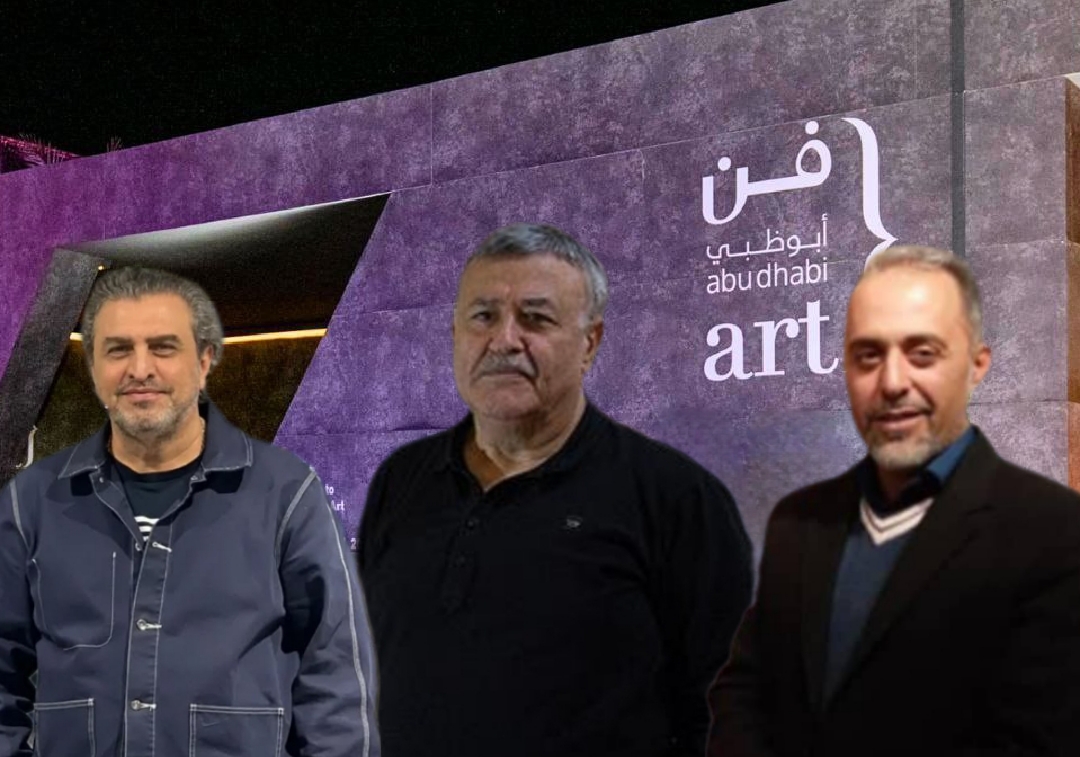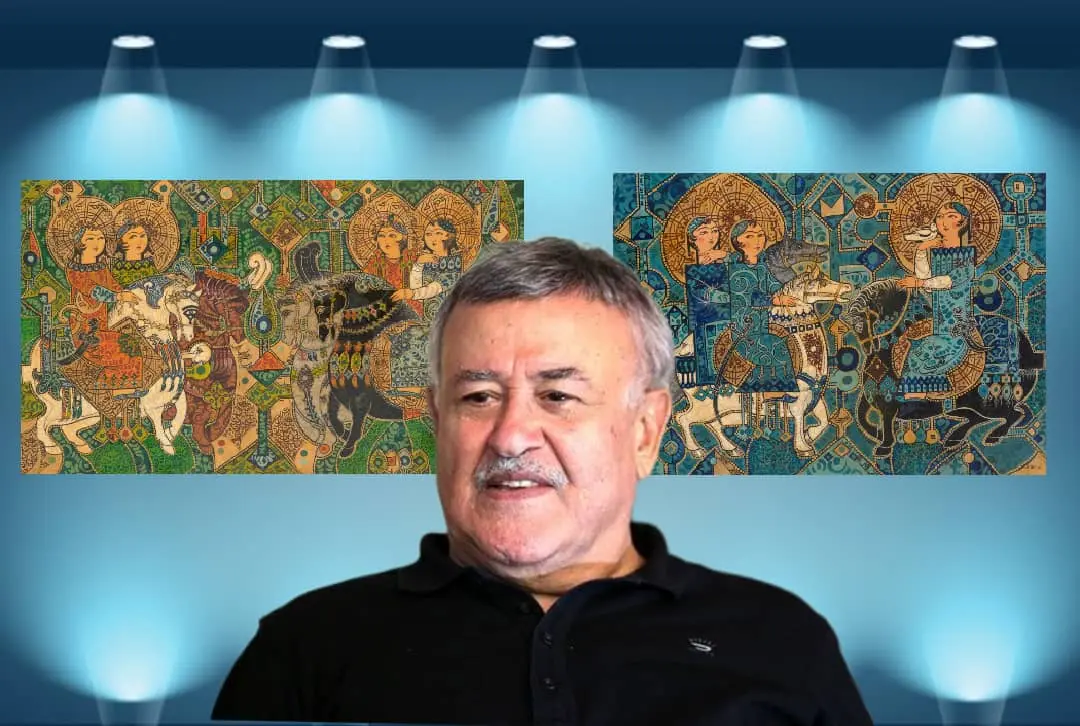
Sadegh Tabrizi and His Painterly Love Stories at Abu Dhabi Art 2025
Sohrab Gallery will present a collection of masterworks by Sadegh Tabrizi at Abu Dhabi Art 2025.
ArtDayMe : From 19 to 23 November, Sohrab Gallery will participate in Abu Dhabi Art 2025 with an exclusive showcase of masterworks by Sadegh Tabrizi.
Mehrdad Fallah and Shahin Torkaman serve as the curators of this presentation.
In this article, we explore two important works by the late Sadegh Tabrizi, selected from his renowned and highly admired series—The Lovers and The Horsemen—which will be featured at Abu Dhabi Art. Works from this celebrated series have achieved remarkable price records at international auctions, including Christie’s and Bonhams.
These works by Sadegh Tabrizi—one of the leading figures of the Saqqakhaneh School—shown at Abu Dhabi Art 2025, are rooted in Persian visual traditions while simultaneously embracing a contemporary and global artistic language. The two paintings embody Tabrizi’s unique visual realm, where mythical narration, ritualistic ornamentation, and modern visual experimentation coexist within a shared conceptual terrain.

The composition is structured from left and right to reach equilibrium at the center, where opposing horsemen confront one another. At the midpoint, an emblematic form—resembling a ritual symbol—acts as both visual and conceptual anchor. This dynamic symmetry, unlike pure geometric balance, offers a flowing rhythm that keeps the eye in constant motion through the repetition and variation of visual motifs. Interwoven forms, striking geometric fields, and dense textural layers eliminate the need for realistic depth, instead recalling the flat and ornamental beauty of Persian miniature painting.
Color plays a central role. The recurring greens, golds, and lapis blues—tones deeply embedded in the symbolic universe of Iranian art—lend the compositions a mysterious aura. In contrast with fiery oranges and piercing yellows, they amplify the dynamism of the figures while maintaining structural cohesion. This chromatic harmony is not only a visual strategy but also carries symbolic resonance, as if ritual energy, martial fervor, and mythic sanctity have been woven together into a single palette.
Line and ornament form one of Tabrizi’s essential visual identities. Continuous, fluid lines define the figures while simultaneously acting as visual strums across the surface, generating a poetic rhythm. Spiraling motifs at times recall calligraphic gestures and, at others, ancient mythological patterns. While the written elements may not be fully legible, they function as purely visual constructs—text becoming a pretext for creating familiar yet enigmatic geometry. Here, Tabrizi’s Saqqakhaneh identity emerges clearly, like a visual signature.

Narratively, rather than employing linear storytelling, the works construct a symbolic, intertextual space. The confrontation between two groups of horsemen, each mounted on richly adorned steeds, evokes ancient Iranian heroic tales. Large halos behind the figures function as sacred or mythic signs, instilling the works with a spiritual atmosphere. This narrative gesture is not a literal scene of battle or festivity; instead, it represents a stage of cultural symbols and ritual beliefs—a meeting of heroism and mystical dignity.
Visually, dense and meticulous texturing evokes the perpetual generation of form. Layers of ornament—from vegetal patterns to miniature-like geometries and talismanic symbols—spread across the surface, transforming it into a living tapestry. This is especially apparent in the rendering of the horsemen’s garments and their steeds, where the motifs are sourced from Persian decorative traditions yet synthesized through modern composition and contemporary expression. The result is a tactile visuality that transcends representation and approaches the nature of woven material.

What distinguishes these works even further is the manner in which cultural heritage is reimagined. Instead of taking a backward-looking approach, Tabrizi treats visual tradition as a living and dynamic language, reshaping it across composition, storytelling, and color. He seeks his identity not in direct representation of historical motifs, but in conceptually reconstruing tradition. This quality renders his art both accessible and compelling for international audiences.
The presence of these two works at Abu Dhabi Art 2025 is grounded in precisely this merit: the capacity to propose a renewed vision of contemporary art from Iran and the Middle East—where past and present, tradition and modernity, narrative and ornament, coexist in thoughtful harmony.

This richly symbolic visual world—immersed in color, pattern, and myth—invites viewers into a dialogue between darkness and light, hero and saint, ritual and mystery. Presented here, Tabrizi’s works stand not only as luminous examples of the Saqqakhaneh movement but also as compelling representatives of the multilayered identity of Iranian art, poised to claim a distinguished place in the international imagination.

LEAVE A RELPY